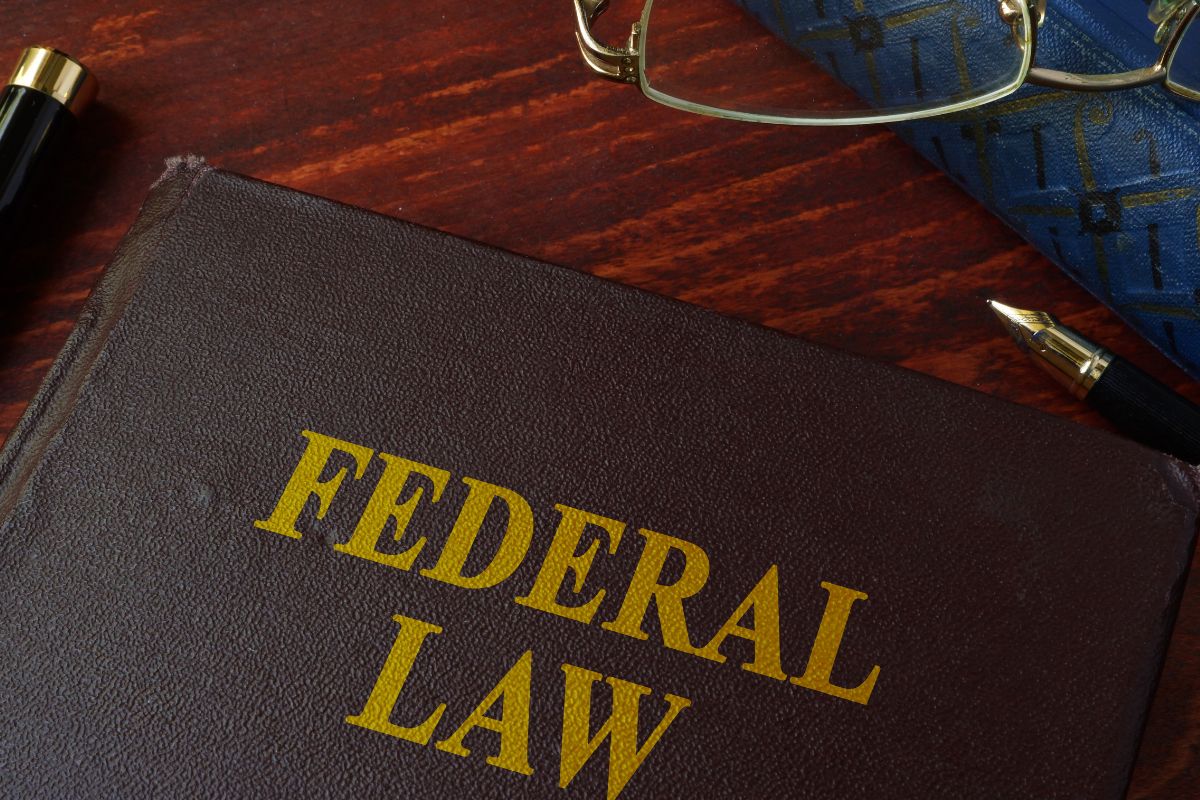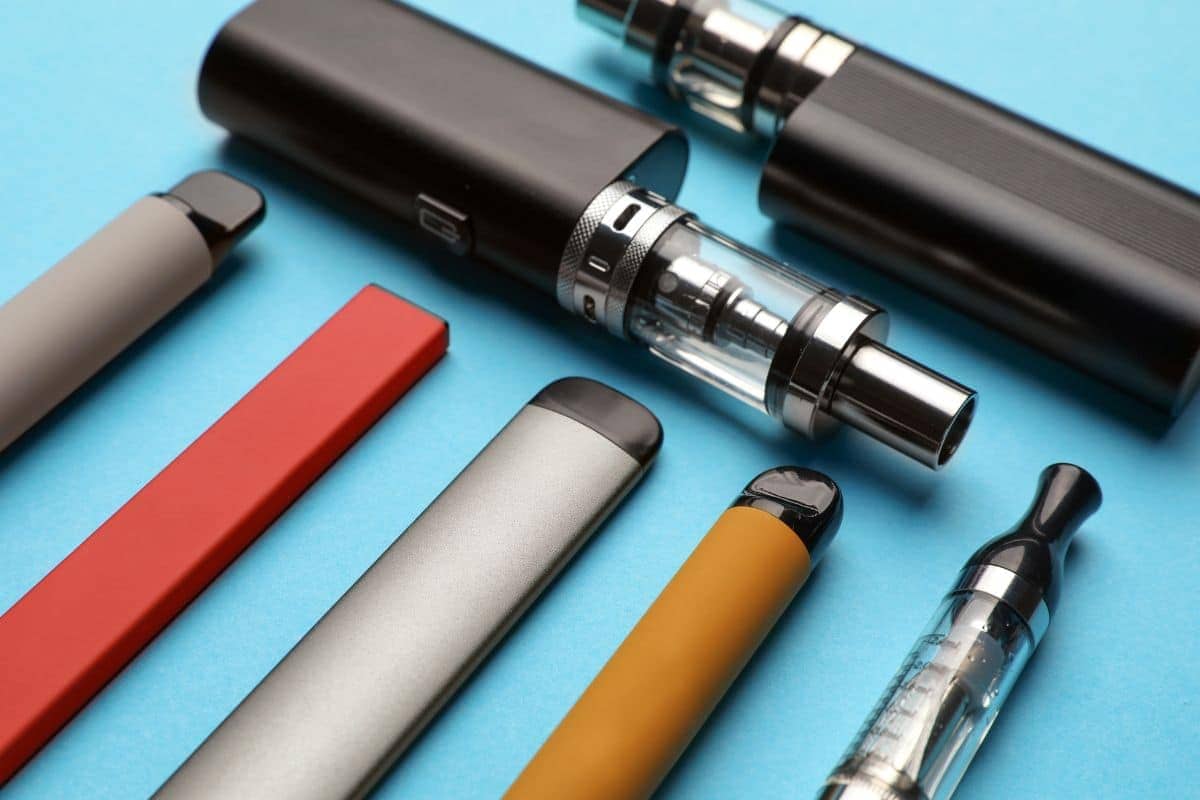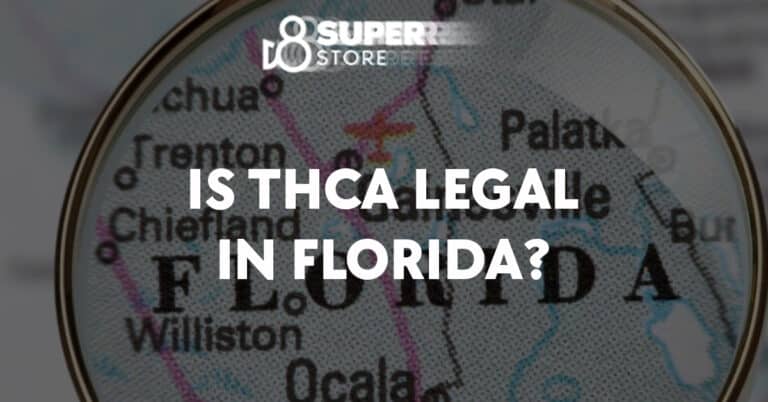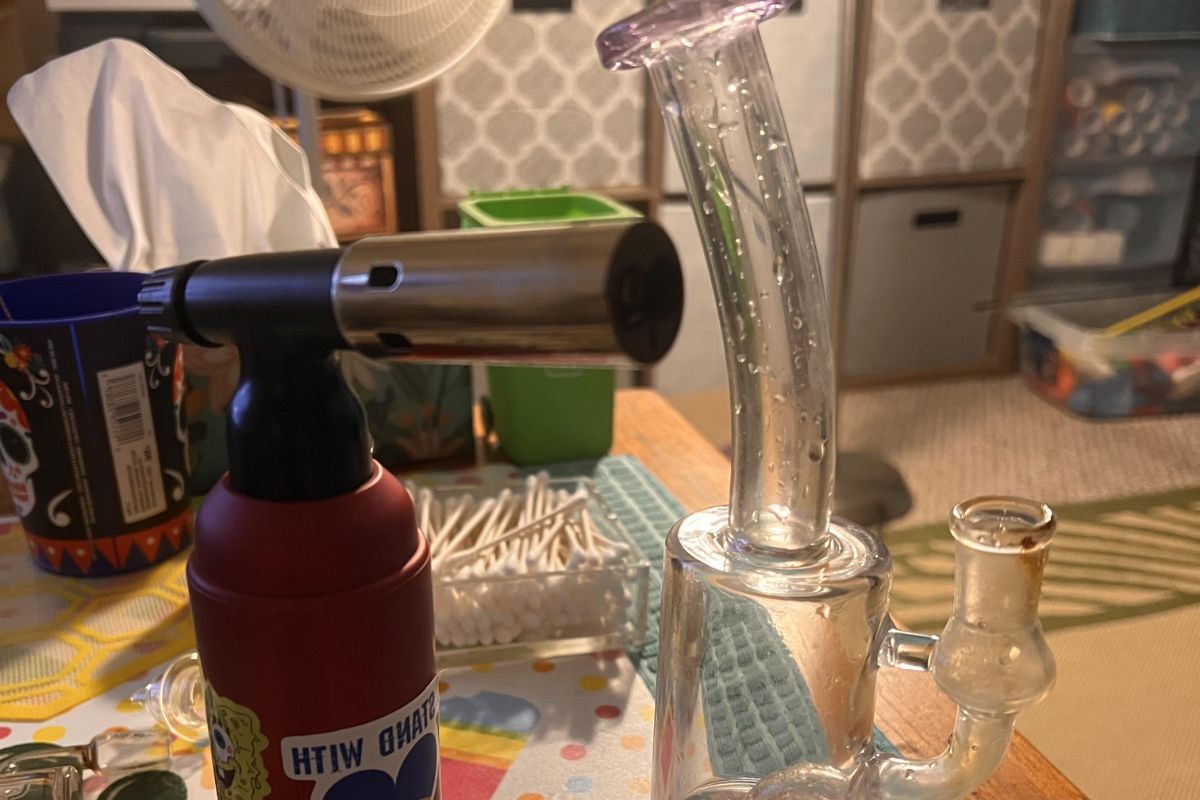Can You Mail Vapes? Understanding Mailing Regulations for E-Cigarettes
In the US, the way we send vapes, e-cigs, and nicotine devices through the mail really stirred the pot, flipping everything on its head. I dove into how to ship these gadgets with the United States Postal Service (USPS), and boy, 2021 was a year of major shake-ups! This shift happened due to worries about health and a strong push to better track the journey of these vaping products.
Table of contents
As of October 21, 2021, it has been prohibited for individuals and small businesses to send vapes via USPS. This prohibition is in accordance with the Prevent All Cigarette Trafficking (PACT) Act which has been expanded to include electronic nicotine delivery systems. Consequently, there are considerable limitations and restrictions on mailing these items, and they generally cannot be mailed through USPS due to the potential health risks and stringent regulatory measures.
However, exceptions do exist under specific circumstances. These include business-to-business (B2B) transactions, shipments for public health purposes, and in some cases, logistical allowances for shipment to locations like Alaska and Hawaii. The rules are complex and require a thorough understanding, especially for those whose businesses rely on the distribution of vaping products. It’s crucial to stay informed about the current laws to ensure compliance and avoid legal challenges.
Regulatory Landscape

As an expert in the topic of vape mailing regulations, I need to highlight that understanding the intricate web of laws at both the federal and state levels, as well as having awareness of international laws, is critical for lawful compliance.
Federal Laws and Regulations
At the federal level, The United States Postal Service (USPS) is restricted from mailing vaping products due to federal law. This stems from amendments to the Prevent All Cigarette Trafficking (PACT) Act, which have expanded its scope to include electronic nicotine delivery systems.
PACT Act and Mail Restrictions
Specifically, the PACT Act amendment, often referred to as the Preventing Online Sales of E-Cigarettes to Children Act (POSECCA), was signed by President Trump. It prohibits USPS from handling shipments of vape products. Private carriers such as UPS, FedEx, and others have also implemented their own policies, largely refusing to ship vaping products.
State-Specific Regulations
State-specific regulations can vary widely, with some states imposing additional restrictions on the sale and distribution of vaping products. These regulations are subject to change, and they often include age verification processes, licensing requirements, and taxation, as mandated by the Food and Drug Administration (FDA).
International Considerations
When considering shipping vape products internationally, one must be aware of the destination country’s laws regarding nicotine delivery devices. Items classified as controlled substances, prohibited items, or restricted items in different jurisdictions can result in seizures or legal penalties.
Mailing and Shipping Vapes
As an expert on the topic, I understand that the recent regulations have profoundly affected the ability to mail and ship vape products. Let’s examine the particulars of these changes.
USPS Vape Mail Ban
As of October 21, 2021, the United States Postal Service (USPS) has implemented a nationwide prohibition on the shipment of vaping products through the U.S. mail. This ruling pertains to a wide array of products including e-cigarettes, nicotine pods, and related paraphernalia. According to Publication 52, this action aligns with the statutory restrictions that also apply to traditional tobacco products.
Private Carrier Policies
In the wake of the USPS ban, major private delivery services such as FedEx and UPS have followed suit. Their policies now restrict the transportation of vaping products, which extends to both nicotine and cannabis items. It’s worth noting that different carriers might have specific acceptability criteria, but the general trend has been towards restriction.
- FedEx: No shipment of electronic cigarettes and related vape products.
- UPS: Similar restrictions in place, mirroring the bans imposed by USPS.
USPS Ban Impact on Businesses
For businesses, especially those reliant on online sales, the USPS vape mail ban presents significant logistical challenges. Some are shifting towards local delivery services where feasible, but distributing such products has become more complex and regional. As a result, businesses are compelled to explore alternative strategies to conform to the legal landscape and maintain their customer base.
In Summary: The ban on mailing vapes affects USPS services, and even private carriers like FedEx and UPS have established their own prohibitions. The implications have reverberated through the vape industry, with businesses seeking new ways to deliver their products legally.
Understanding E-Cigarettes and Vaping Products

E-cigarettes and vaping devices represent a technology developed as an alternative to traditional smoking, and my aim is to unpack the devices’ components and the variety of products available.
Components of Vaping Devices
The primary parts that make up e-cigarettes and other vaping devices include:
- Power source: Typically a battery, which is often rechargeable.
- Atomizer: The heating element that turns e-liquid into an aerosolized solution.
- Cartridge/Tank: The container for e-liquid or vaping material.
- E-liquid: A solution that often contains propylene glycol, glycerin, flavorings, and often nicotine.
- Mouthpiece: The part through which I inhale the vapor.
These components work together in an Electronic Nicotine Delivery System (ENDS) to deliver an inhaled aerosol.
Types of Vaping Products
The market offers a diverse range of vaping products, which include:
- E-cigarettes: Sometimes resembling traditional cigarettes in form and function.
- Vape pens: Larger than e-cigarettes and often contain a tank for vape juice.
- Advanced Personal Vaporizers (APVs) or Mods: Customizable and can include features like variable wattage.
- Pod Systems: Compact devices that use pre-filled or refillable pods.
All these devices utilize a mechanism to heat a liquid (e-liquid or vape juice) that usually contains nicotine, flavorings, and other additives, creating a vapor that I inhale. The nicotine in this vapor is what provides a similar experience to smoking tobacco products without the combustion of traditional smoking.
Business Compliance and B2B Sales
In light of the amendments made to the Preventing All Cigarette Trafficking (PACT) Act, I understand that compliance has become a cornerstone for businesses dealing with the sale and distribution of vaping products. The B2B sector still operates under certain exemptions, although with stringent requirements.
Compliance with PACT Act
Under the PACT Act, I am aware that businesses are required to adhere to strict regulations. As a manufacturer or distributor, compliance involves:
- Registering: Both with the Bureau of Alcohol, Tobacco, Firearms and Explosives (ATF) and the local Tax Administrator in each state where commerce happens.
- Reporting: Monthly transactions must be reported to the ATF and state authorities. This includes details on the type and quantity of products sold and customer information.
- Verification: A meticulous verification process must be in place to ensure sales are only made to individuals of legal smoking age. This involves age and identity verification tests.
- Labeling: Shipment packages must have a statement confirming the recipient’s obligation to comply with state laws regarding tobacco product taxation.
B2B Exemptions and Requirements
The B2B (business-to-business) sector enjoys certain exemptions under the PACT Act, specifically when it comes to shipping vaping products. However, exemptions come with their own set of requirements for compliance:
- B2B Sales: Only businesses selling to other businesses can ship vape products through the U.S. mail under certain conditions.
- Exemption Claims: Businesses must apply for B2B exemption, and this application involves proving that sales are strictly B2B and not direct to consumers.
- Documentation: Sufficient documentation — such as business licenses and sales invoices — must support the exemption status of B2B transactions.
- Delivery Methods: In cases where USPS is not an option, alternative methods such as private delivery services or personal delivery mechanisms are considered if practical and compliant with federal regulations.
Ensuring adherence to these regulations is critical for maintaining the legality and integrity of the vaping industry’s B2B commerce.
Consumer Awareness

As a specialist in regulatory compliance, I am often asked about the implications of mailing vape products. The recent changes to USPS regulations have significant effects on what consumers can and cannot do.
Consumer Implications of USPS Ban
After the implementation of the USPS vape mail ban, I’ve seen a considerable impact on consumers. It’s important to note the ban specifically targets the mailing of electronic nicotine delivery systems (ENDS), which include a variety of products such as:
- E-cigarettes
- Vape pens
- Nicotine pods
- Related accessories
Age verification has become a critical element. With the PACT Act’s requirements, online retailers must verify the age of purchasers to prevent sales to minors. Consequently, consumers’ access to these products through the mail has been greatly restricted.
Safety and Legal Considerations for Consumers
From a safety perspective, consumers need to be aware of the legal landscape. Nicotine, being a regulated substance, has attracted strict scrutiny. Purchasing nicotine-containing products from unauthorized sources or attempting to mail such items can lead to legal complications.
Regarding taxes, proper taxation on vape products is enforced to ensure compliance with state and federal laws. The USPS ban not only addresses public health concerns but also aims to regulate and track sales more effectively. Consumers should purchase from reputable sources that adhere to tax regulations to avoid legal issues.
Shipping Alternatives and Logistics
Due to restrictions imposed by major carriers, navigating the logistics of mailing vapes requires understanding the available alternatives and adhering to specific regulations.
Finding Alternative Shipping Carriers
I’ve uncovered that shipping vape products via major carriers like USPS, UPS, and FedEx is no longer an option, as they have all ceased delivery of electronic vaping devices and related components to residential addresses in 2021. Consequently, locating alternative shipping services that specialize in the delivery of vape products has become necessary. DHL remains a potential option, but it’s imperative to verify their current policies as these may have changed. In my search, local and regional carriers may offer services compliant with shipping regulations for vape products and should be evaluated on a case-by-case basis.
Packaging and Labeling Requirements
Correct packaging and labeling are critical for the shipment of vaping products. It’s mandatory to use packaging that is durable and conceals the contents. I must label the package with all pertinent information required by the carrier and regulatory bodies which often includes sender and receiver’s age verification. It’s recommended to stay well-informed about the evolving packaging standards to ensure compliance.
Special Cases: Military and Overseas
For military and overseas shipments to Fleet Post Office (FPO), Army Post Office (APO), and Diplomatic Post Office (DPO) addresses, there are distinct considerations. I have learned that vape products can sometimes be mailed to these addresses, but it largely depends on local laws of the destination country, as well as specific military regulations. The treatment for vape products can be stricter for military personnel and foreign service workers. It is advisable to directly consult with the postal service that oversees these special addresses to confirm current policies before attempting to ship.
Legal Implications and Penalties

When discussing the shipment of vape products, it’s essential to understand that non-compliance with federal laws can lead to serious penalties. As someone well-versed in the legal framework governing these products, I’ll focus on what those penalties entail and the potential civil and criminal consequences.
Penalties for Non-Compliance
Under the updated Preventing Online Sales of E-Cigarettes to Children Act, entities that fail to comply with the law risk significant penalties. This legislation is designed to prevent minors from purchasing vaping products online, and compliance with it is mandatory. The penalties for non-compliance can include:
- Fines: Businesses may face substantial financial penalties, which vary depending on the gravity and frequency of the violations.
- Tax Stamps: Products must also carry the appropriate tax stamps as required by various jurisdictions; failure to do so can result in further fines or legal action.
Civil and Criminal Consequences
In severe cases of violation, the consequences may extend beyond financial penalties:
- Civil Penalties: Apart from fines, businesses can face civil penalties including injunctions or the revocation of licenses, which can cripple their operations.
- Criminal Penalties: Willful violations of the law, such as repeated sales to minors or tax avoidance, could lead to criminal charges, potentially resulting in prison sentences for responsible individuals.
Understanding and adhering to these compliance measures is crucial for any business involved in the sale and distribution of vaping products to ensure they operate within the legal bounds established by federal regulations.
Safety and Restrictions
| Safety Measures | Restrictions |
|---|---|
| 1. Ensure Proper Packaging: Use sturdy, leak-proof materials to prevent damage during transit. | 1. Age Restrictions: Shipping may be restricted to customers above legal vaping age. |
| 2. Secure Storage: Store vapes in a cool, dry place away from direct sunlight or heat sources. | 2. Legal Regulations: Adhere to local laws governing the sale and shipment of vaping products. |
| 3. Clear Labelling: Clearly label packages with product information, warnings, and handling instructions. | 3. Shipping Carriers’ Policies: Comply with carrier-specific regulations and requirements. |
| 4. Compliance with Regulations: Ensure products meet all safety standards and regulatory requirements. | 4. International Laws: Consider regulations governing the import/export of vaping products across borders. |
| 5. Protection from Heat: Shield products from extreme temperatures to prevent battery or liquid damage. | 5. Customs Declarations: Accurately declare vaping products when shipping internationally. |
| 6. Use of Insulation: Employ insulation materials to safeguard against temperature fluctuations. | 6. Quantity Limits: Observe any limitations on the quantity of vaping products that can be shipped at once. |
| 7. Battery Handling: Follow proper procedures for handling and shipping lithium-ion batteries to prevent accidents. | 7. Destination Restrictions: Be aware of specific regions or areas where vaping products are prohibited. |
| 8. Avoiding Leakages: Ensure all containers are tightly sealed to prevent leaks or spills during transit. | 8. Prohibited Locations: Avoid shipping to places where vaping is banned, such as certain public spaces or institutions. |
| 9. Training for Handling: Provide training to staff involved in handling and shipping vaping products to ensure proper procedures are followed. | 9. Restricted Countries: Be mindful of countries with strict regulations or bans on vaping products. |
| 10. Emergency Procedures: Establish protocols for handling emergencies, such as leaks, spills, or battery malfunctions, during shipping. | 10. Hazardous Materials Guidelines: Adhere to guidelines for shipping hazardous materials, particularly regarding batteries and e-liquids. |
When handling the shipping of vapes, understanding the specifics of hazardous materials and restrictions is critical. Mailing these items carries important legal and safety considerations, especially given their classification and the materials involved.
Hazardous Material and Shipping
Vaping devices and their components can contain hazardous materials, especially batteries and e-liquids which may be regarded as potential hazards due to their chemical and electrical nature. Shippers must follow strict guidelines, which include:
- Packaging: Items must be properly contained to prevent leaks or damage.
- Labeling: Packages must clearly indicate that they contain hazardous materials (HAZMAT).
- Carriers: Certain carriers may have specific restrictions or prohibitions on sending these items due to their potentially dangerous nature.
The risks with shipping these materials stem from the possibility of leaks, which can be harmful if they contain nicotine, or if batteries short-circuit, potentially causing fires.
Regulated and Prohibited Items
Nicotine delivery systems, which include e-cigarettes, vape pens, and associated products, fall under federally regulated substances within the tobacco product category. Specific regulations apply to the mailing of such items:
- Nicotine-containing devices and e-liquids: These are often subject to the same restrictions as traditional tobacco products.
- Batteries and coils: Considered as HAZMAT; special regulations apply.
- Drug paraphernalia and substances: Any items that can be associated with the cannabis industry or marijuana are likely subject to postal restrictions, as they are federally controlled substances.
Following the implementation of the Prevent All Cigarette Trafficking (PACT) Act, and subsequent USPS regulations, mailing vape products is generally nonmailable, with certain limited exceptions. Sending items like explosives and firearms is strictly prohibited and carries significant penalties. Each shipper is responsible for compliance with federal laws and the specific shipping guidelines of their chosen carrier. Failure to adhere to these rules can lead to substantial fines and legal consequences.
Market Considerations

In evaluating the impact of mailing restrictions on vaping products, I will discuss the effects these constraints have on different areas of the market. The implications touch various aspects including the vape industry, consumer trends, and how products are sold and distributed online.
Impact on Vape Industry
The prohibition of shipping vaping products like e-cigarettes, vape pens, and electronic nicotine delivery systems (ENDS) via the U.S. Mail, as defined by the PACT Act and effected since October 21, 2021, has had a substantial impact on the vape industry. Manufacturers, distributors, and retailers are now required to navigate alternative logistics solutions for delivering their products to consumers, often at a higher cost. The need to comply with federal regulations has also necessitated better age verification processes to prevent the possession of vapor products by minors.
Changing Consumer Trends
Consumer behavior has shifted in response to these mailing restrictions. Some customers have turned to brick-and-mortar stores to purchase their vaping products such as vape juice and e-liquids, while others have sought out online vendors that have established compliant shipping methods. Notably, this shift may alter the variety of products available to consumers, especially for those seeking niche vaporizers and e-liquids.
Online Sales and Distribution
Online sales and distribution channels for vaping products have had to adapt considerably. Companies must now invest in private delivery services for internet orders that ensure adherence to regulatory standards. Here’s how vaping products are affected:
- Cigarettes & Smokeless Tobacco: PACT Act compliancy required.
- Vape Pens & E-Cigarettes: Cannot be shipped via U.S. Mail.
- Heated Tobacco Products & IQOS: Specific restrictions apply.
- Vapes & ENDS: Private shipping solutions necessary.
- Nicotine & Vape Juice: Age verification systems implemented for online sales.
I recognize that the landscape for marketing and purchasing these products has evolved to meet these regulatory demands, underscoring the need for robust compliance processes to maintain market stability.
Additional Resources
When seeking to understand the complexities of mailing vapes, I find it crucial to consult a variety of resources. These range from official documents provided by federal agencies to support systems offered by advocacy groups that help navigate regulations.
Guidance Documents and Official Statements
Federal agencies such as the FDA (Food and Drug Administration) and the ATF (Bureau of Alcohol, Tobacco, Firearms and Explosives) release guidance documents which detail the legal landscape for mailing vape products. The PACT Act—enacted under President Trump—requires an adult signature upon delivery of vape products, adding a layer of verification to the process. I recommend thoroughly reviewing the Final Rule issued by USPS, which prohibits the shipment of vapes and electric nicotine delivery systems through their network. This document also outlines the application process and possible exceptions.
Support and Advocacy Groups
There are groups available to help both individuals and businesses cut through the proverbial red tape associated with mailing vape products. These groups provide support in understanding federal laws and the specificities of compliance, like ensuring that trucks transporting vapes have the necessary paperwork and meet all regulatory requirements. It’s beneficial to connect with these organizations for up-to-date information and assistance.
Frequently Asked Questions
In this section, I aim to clarify the commonly asked questions regarding the rules and regulations about mailing vapes and related products.
Is it permissible to send vape products through the mail?
As of the latest regulations, I cannot mail vape products through the United States Postal Service (USPS). This is due to a ruling on October 21, 2021, which falls under the Preventing Online Sales of E-Cigarettes to Children Act.
Are there any legal ways to circumvent the vape mail restrictions?
There are no legal means to circumvent the restrictions on mailing vape products. Compliance with federal laws is mandatory, and attempting to avoid these regulations can result in legal consequences.
What are the rules for mailing vape juice via the USPS?
USPS prohibits the mailing of vape juices along with other electronic nicotine delivery systems. The ban is a result of the Preventing Online Sales of E-Cigarettes to Children Act, indicating that vape juice is nonmailable matter.
Can disposable vapes be shipped internationally?
I cannot send disposable vapes internationally through USPS due to the current mail ban on vape products. This ban includes both domestic and international shipping.
What are the policies for shipping vapes through private carriers like UPS and FedEx?
Private carriers such as UPS and FedEx have also implemented restrictions on shipping vapes and related products. Their policies are separate from USPS but they have similarly stringent guidelines to comply with federal law.
Is sending a vape to a friend through postal services allowed?
Sending a vape through postal services to a friend is not allowed under USPS due to the vaping product mail restrictions currently in place. Sending such items contravenes the federal law that prohibits the shipment of vape and nicotine delivery products.







